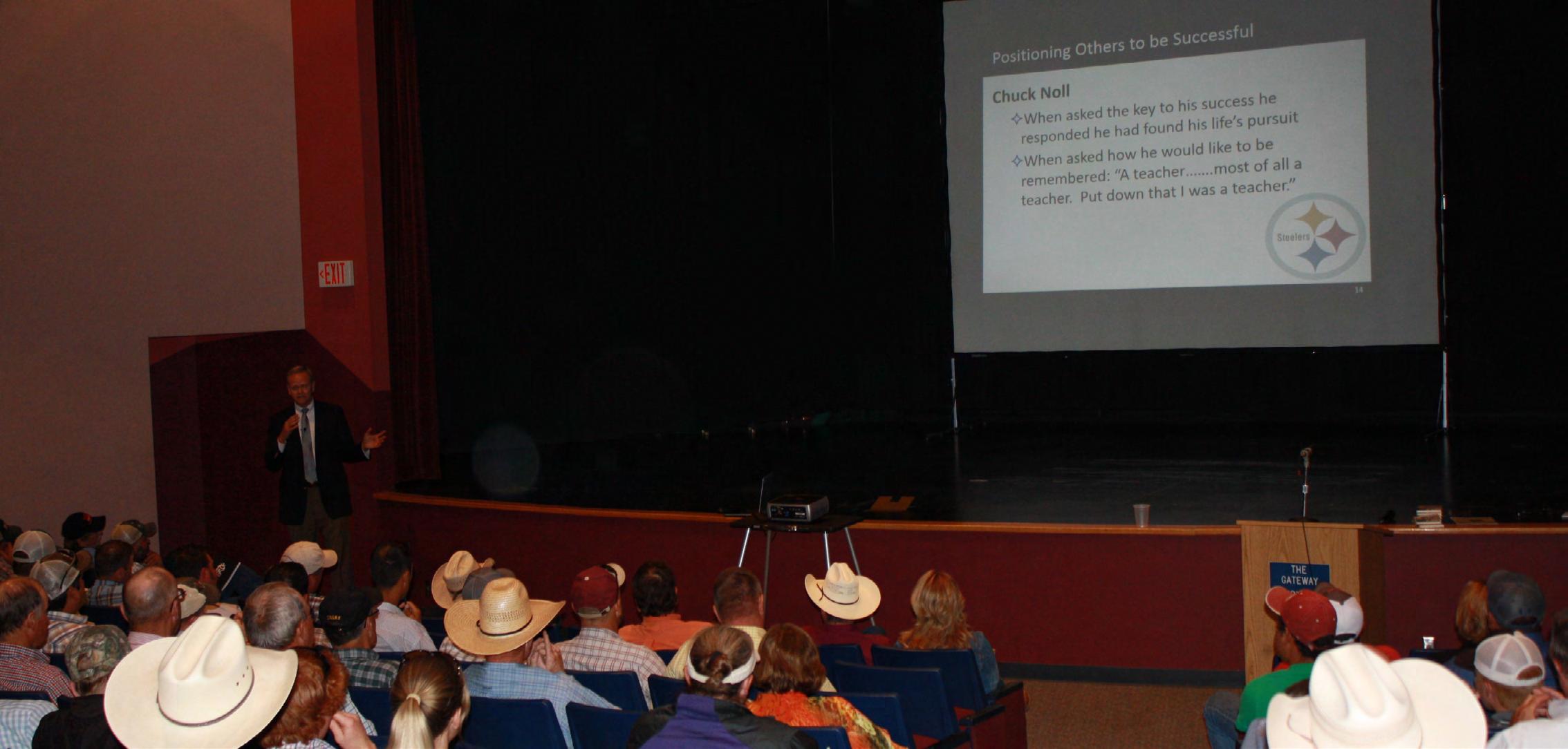
3 minute read
Transitioning Employees to Team Members
By: Dr. Larry Firkins, University of Illinois College of Veterinary Medicine
When given the chance over the past year, I have tapped into the depth of experience represented in sessions spent with owners, managers, and employees of livestock operations.
In particular, I inquired as to what has been successful in transitioning employees into team members and what were areas of opportunities yet to be realized in developing people. Hundreds of years of experience populated every setting and there was no hesitation in addressing these two questions.
Central themes developed from each and every gathering regardless of geographic location or whether cattlemen or pork producers were involved. It was encouraging that the lists of successful strategies were uniformly longer than what was compiled as “gaps” that needed to be filled. However, when given the opportunity to report their findings, the vast majority of the individual groups chose to discuss one of their identified areas of opportunity.
Many times what was reported elicited a robust confirmation of it being an issue of importance, and in some cases frustration, for the entire assembly.
My primary takeaway from all of these discussions was the importance of establishing fully-staffed, long-term, stable teams. This belief has been validated through an analysis of NBA teams over a 15-year period that demonstrated the greater the stability of the team’s roster - the fewer trades, moving players on and off the team - the better they played.
A better team record depended on players learning the nuances and patterns of their teammates. This resulted in an increase in trust through enhancing the level of tactical knowledge that can only be learned through experiences with teammates. (Wagner, 2006)
Below are the three most common responses on what’s working and areas of opportunity in transitioning employees to team members.
These findings are offered as a vehicle to continue this discussion at your business. Perhaps you would benefit from a strategy that has worked well for others in transitioning employees or you may identify a shared gap in the area of developing people that needs your attention.
What has been successful in transitioning employees to team members?
1. Fostering a feeling of inclusion, giving responsibility, holding accountable, and recognizing great effort. While these were cited multiple times as separate areas, there is an interdependency on each of these serving as a domino effect toward achieving a culture that resulted in engaged employees.
2. Providing a clear understanding of job descriptions and expectations. Teams that have a clear understanding of what is expected of them are more productive, more profitable and more creative. A national survey showed that less than half of employees have a clear understanding of what is expected of them. Not knowing what the target is results in frustration.
3. Providing the latitude to make decisions. When we are merely told to follow instructions, our suggestions are ignored, and our creativity is unnoticed, our focus changes to “just getting by.” Engagement, motivation, and initiative increase when we are allowed opportunities for increased decision making.
What are areas of opportunity (gaps) for developing people?
1. Lack of time. This was consistently the most commonly referenced issue holding managers back from transitioning employees to team members. Within any organization, at least 80% of our days are spent maintaining production levels. It’s the remaining 20%, the above-andbeyond efforts that move us forward. If this time is spent repairing errors rather than doing what matters most, it is impossible to move ahead (Gostick and Elton, 2010). Utilizing a portion of the remaining 20% of your time to enhance the competence of your workforce will catalyze the transition to team members.
2. Generational differences and work ethics. What seems natural to individuals in any given generation is anything but that for members of the other workplace generations. The key is how can one incorporate what comes natural for each generation into their business. This requires developing relationships and managing generation- al expectations. Knowing and understanding what makes us different is the secret to determining strategies and actions that can transform the workplace.
3. Measuring, accountability, and rewarding people. It is interesting that what was listed as being successful by some groups was listed as a gap needing to be filled by other groups. It is time well spent to determine what needs to be measured, holding people accountable, and rewarding people to the point they feel compelled to tell those most important to them about the recognition.











